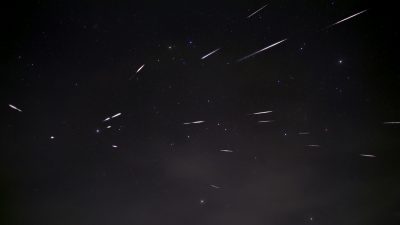In CBET 4692 (published on Nov. 4), Esko Lyytinen and Peter Jenniskens predicted a potential short alpha-Monocerotid outburst on November 22nd, with meteor hourly rates that could nearly reach 1995 outburst levels, when a 40-minute outburst reached ZHR up to 400. Many observers were out observing this potential event: first results show the outburst occurred, but rates were below expectations.

On November 4, 2019, less than 3 weeks before the expected alpha-Monocerotids (AMO) maximum, Esko Lyytinen and Peter Jenniskens exposed in a CBET 4692 the reasons that make them think 2019 AMO could behave in a similar way than what they did in 1995, when a 40-minute outburst with ZHR reaching up to 400 was predicted and observed. According to them, due to uncertainties on the dust trail position, it was possible to explain all past outbursts (1925, 1935, 1985 and 1995) and expect a potential outburst in 2019, on November 22, 04h50min UT.
Many visual observers were alerted and video/radio stations were monitoring the sky on that period. Results show that the predicted outburst was actually observed close to the predicted time, but rates were around 3-5 times below what was expected. Visual observers benefiting of clear skies clearly observed an increase in activity, most of them recording 10 to 20 meteors in less than 30 minutes around 04h50-05h00 UT, whereas activity was nearly non-existent tens of minutes before and after (before 04h45min UT and after 05h05min UT).
Analysis of the date show the outburst occurred around 04h57 UT, with ZHR ranging close to 80-100, which shows time predictions was accurate, but trail position must have been slightly off the expected position. Let’s hope this new set of observation regarding this outburst will help predicting the future ones with even more accuracy.



 You saw something bright and fast? Like a huge shooting star? Report it: it may be a fireball.
You saw something bright and fast? Like a huge shooting star? Report it: it may be a fireball.  You counted meteors last night? Share your results with us!
You counted meteors last night? Share your results with us!  You took a photo of a meteor or fireball? You have a screenshot of your cam? Share it with us!
You took a photo of a meteor or fireball? You have a screenshot of your cam? Share it with us!  You caught a meteor or fireball on video? Share your video with us!
You caught a meteor or fireball on video? Share your video with us!